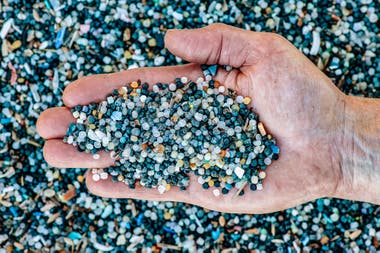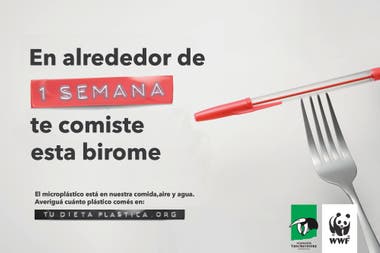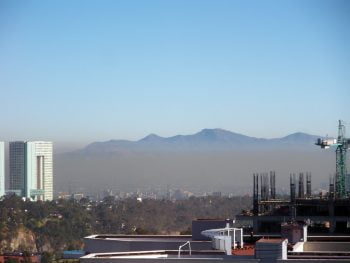We can no longer deny it: plastic pollution has become one of the main environmental problems we face today. However, just as we were and are its creators, we can also become its solution.
When we emphasize the urgency of a regulation on the disposable products, in the prohibition of microplastics in products in which they can be replaced, in the sanction of a law of packaging that includes the responsibility extended to the producer and in promoting a correct separation of the garbage in origin, we do it from an extreme urgency. According to the latest report by the University of Newcastle (Australia) on the ingestion of plastics in humans, which analyzed 52 case studies from around the world, a person on average could be ingesting approximately five grams of microplastics per week, that is, the equivalent to the weight of a credit card.
All the plastic that we are discarding returns us. Countless and tiny pieces enter our ecosystems and contaminate the food we eat, the water we drink and the air we breathe. The plastic does not disappear, and we still do not know with certainty how much it affects our health and what are the potential toxicological risks for humans.
Demand public policies
If we go over the hardest data, we must consider that 8,000,000 tons of plastic are thrown into the sea each year, and that almost half of all its production goes to create single-use products.
With the action of the sea and the sun, this material is divided into smaller pieces, identified as microplastics, which are particles of less than five millimeters. These microplastics, which end in the oceans, contain a high concentration of toxic agents, known to generate diseases in the species that impede development, produce endocrine alterations and cause behavioral changes, among other problems. The plastic ingested by marine fauna then persists in the digestive system, and causes decreased appetite, gastrointestinal blockages and decreased enzymes, leading to problems in reproduction and feeding, and ultimately, affecting us.
Scientists from the National University of La Plata found synthetic fibers in the stomachs of five species of fish from the estuary of the Río de la Plata. Conicet researchers say that we are facing “alarming levels” regarding the presence of microplastics in the waters of the Paraná River and in fish.

According to data from the United Nations (UN), 80% of the plastic that is currently in the ocean originated in the continents -and reached the sea through rivers, streams, rain, wind or directly thrown by the people-; 90% of the world's seabirds have plastic fragments in their stomachs, and 91% of all plastics are not recycled. By 2030, there is a risk that 104,000,000 tons of plastic will enter the environment.
The cause is clear. We are facing a global problem that we can only solve if we take measures and policies to reduce the production and use of plastic, and attack this crisis. If we do not want plastic in our body, we have to stop the millions of tons of plastic that we abandon and discard, that do not biodegrade and over which we have no management plan.
Recently, ministers of the countries that make up the G-20 agreed to create an international framework for action to reduce pollution by plastics in the oceans, but the adoption of these measures will be, in principle, voluntary.

Since
Wildlife, and together with other organizations, we are working and promoting a specific bill on primary microplastics that prohibits by the end of this year the production, importation and marketing of cosmetic and oral hygiene products for dental use containing plastic microbeads intentionally added This would decrease the amount of microplastics that are poured into the environment and, therefore, that of plastic particles that enter our body.
In order to provide comprehensive answers, we are also working on two other bills: a plan to eliminate the delivery of plastic bags in each sale by commercial establishments and a law on minimum budgets for environmental management of packaging, contemplating the responsibility extended to the producer .
It is necessary that the conversation about plastics contamination becomes serious and forms part of the legislative agenda to face this crisis with transverse and concrete resolutions, without delays. We are responsible for this situation. Now we must be the ones to fix it.
The author is coordinator of the Argentine Wildlife Garbage Project
The impact of the microplastic in figures
In the body
- 250 grams of plastic we ingest per year: People eat around 2000 plastic particles every week, about 5 grams; approximately, 21 grams per month.
- 1760 plastic particles have the water consumed weekly: The largest source of plastic ingestion worldwide is through water, both bottled and tap.
- 182 particles the seafood portion: Another source of microplastics are molluscs (mussels, clams, etc.) and crustaceans (shrimp, prawns, etc.). Consumed daily they would contribute 0,5 grams, since they eat whole, including their digestive system. They are followed in the amount of plastic fibers that provide beer (10) and salt (11).
In the environment
- 75% of the plastic is wasted: It is not recycled; the production of virgin plastic increased 200 times since 1950.
- 87% of plastic waste ends up in nature: They reach the storm mouths, travel through the rain and end at the beaches or directly at sea.
- The ocean will contain one metric ton of plastic for every three metric tons of fish by 2025.
What can we do

- Although saying no to single-use plastics and using reusable bags is a great first step and should be an obligation, since the World Conservation and Wildlife Organization Argentina clarifies that it is governments and industries that have to solve the problem in the background, changing their production models, laws and public policies.
- The study of Wildlife included the development of a calculator to be able to know the individual consumption. There's a
test and it is also possible to sign a petition for the creation of a global treaty
* Verónica García is Coordinator of the Marine Garbage Project of Fundación Vida Silvestre Argentina.
ALSO
.
Publicado en el diario La Nación





